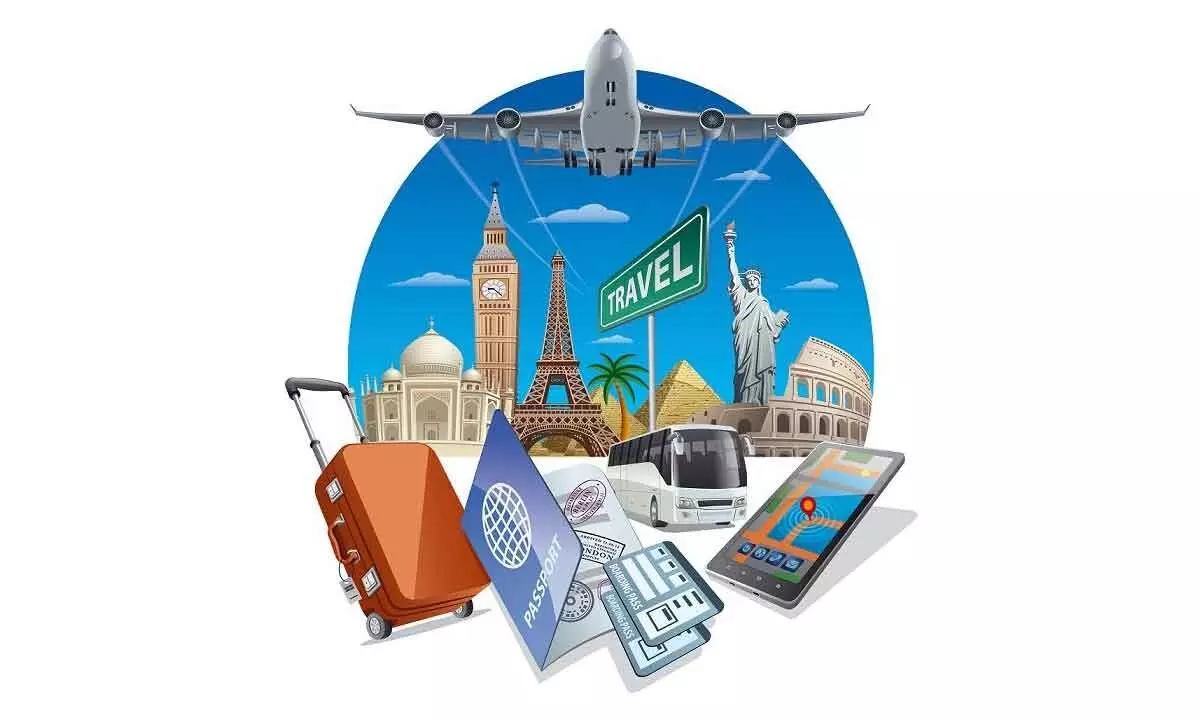Smart travel is the new norm
Rather than rushing between destinations, spend more time in a single place
image for illustrative purpose

Look for accommodations that employ local people, serve locally sourced food and have a written environmental policy: this could include things such as how they deal with wastewater, their approach to heating/cooling the premises and/or their involvement in local conservation projects. Before you settle on a tour operator, make a research of their green credentials
Terms such as "sustainable travel", "eco-tourism" and "responsible travel" are nothing new – and with reports of the worsening climate crisis and over-tourism they've never been more important.
Go beyond the obvious hotspots and swap out typically crowded places for those more dependent on visitors. Local communities in the Caribbean are especially reliant on the GDP that comes from tourism.
Over-tourism is a complex issue, and boycotting destinations that rely heavily on their tourism industry is not always the best option. If your heart is set on seeing Venice’s canals or drinking in Iceland’s volcanic landscapes and compact capital, consider travelling outside the peak season.
If you can reach your chosen destination by train rather than plane, you’ll dramatically reduce your carbon emissions. And if you're travelling within France, the country recently banned short-haul domestic flights where the same journey by rail can be taken in under two-and-a-half hours.
While multiple stopovers might help pinch some pennies, when it comes to the environment, a direct flight is generally the best option. This is because around 25% of an aircraft’s emissions come from the takeoff-landing cycle (including taxiing). If it’s possible to do so, skip the layover and settle in for the long haul.
Rather than rushing between destinations, slow down and spend more time in a single place – even better, swap multiple city breaks throughout the year for one longer trip that truly allows you to get to grips with a country. You’ll save on travel emissions and get much more from – and ultimately give much more back to – the place you’re visiting.
It may sound obvious, but making use of public transport over taxis or a hire car is an easy way to reduce your carbon footprint on the ground. Research metro systems, city buses and tram services before you set off and, if you fancy blowing off some cobwebs, check whether your destination has a bike-sharing scheme.
Look for accommodations that employ local people, serve locally sourced food and have a written environmental policy: this could include things such as how they deal with wastewater, their approach to heating/cooling the premises and/or their involvement in local conservation projects.
Before you settle on a tour operator, make a research of their green credentials. Find out, for example, if they’ve abolished single-use plastic, if they use green forms of transport, or if they’re heavily involved with/donate to local conservation efforts and environmental projects. Check whether they carry out their tours responsibly too, being mindful of fragile ecosystems (including in national parks and marine habitats like the Great Barrier Reef) and respectful of local communities and wildlife.
The responsibility doesn’t sit squarely on the tour operator’s shoulders, though. Even if your tour falls short when it comes to sustainability, you can still take steps to ensure your visit leaves as little an impact as possible. Take any rubbish with you and (though it might be tempting to sneak a souvenir) leave natural phenomena including shells, coral and rocks where you found them.
In an age of smartphones and selfies, it’s all too easy to snap a quick pic without consideration for its subject. But, especially when visiting indigenous communities, you should always ask first. You’ll ultimately get much more from the exchange if you do. It was also reported that, between January 2008 and July 2021, at least 379 people died in their quest to take a selfie. Needless to say, that the Instagram-perfect shot of you perched precariously on a cliff or jumping into a lake without knowing its depth is simply not worth it. It could be fatal!
There’s no escaping the fact that giant cruise ships can have a negative impact on both the environment and the communities they’re visiting – Venice has even placed a ban on cruise ships entering its historic city centre. But some lines fare better than others when it comes to sustainability – and, if you're planning a cruise, it’s worth seeking them out.
Abandon global chains and resort restaurants in favour of locally owned cafés, restaurants and street-food stalls that champion local produce and ingredients.
One of the best – and often most rewarding – ways to travel more sustainably is to rediscover the charms of your home country.
A "staycation" means you'll have no need to take that long-haul flight, instantly lowering the carbon footprint of your holiday, and you'll no doubt save some money too.
You just might be surprised by the hidden attractions you uncover on home soil.

